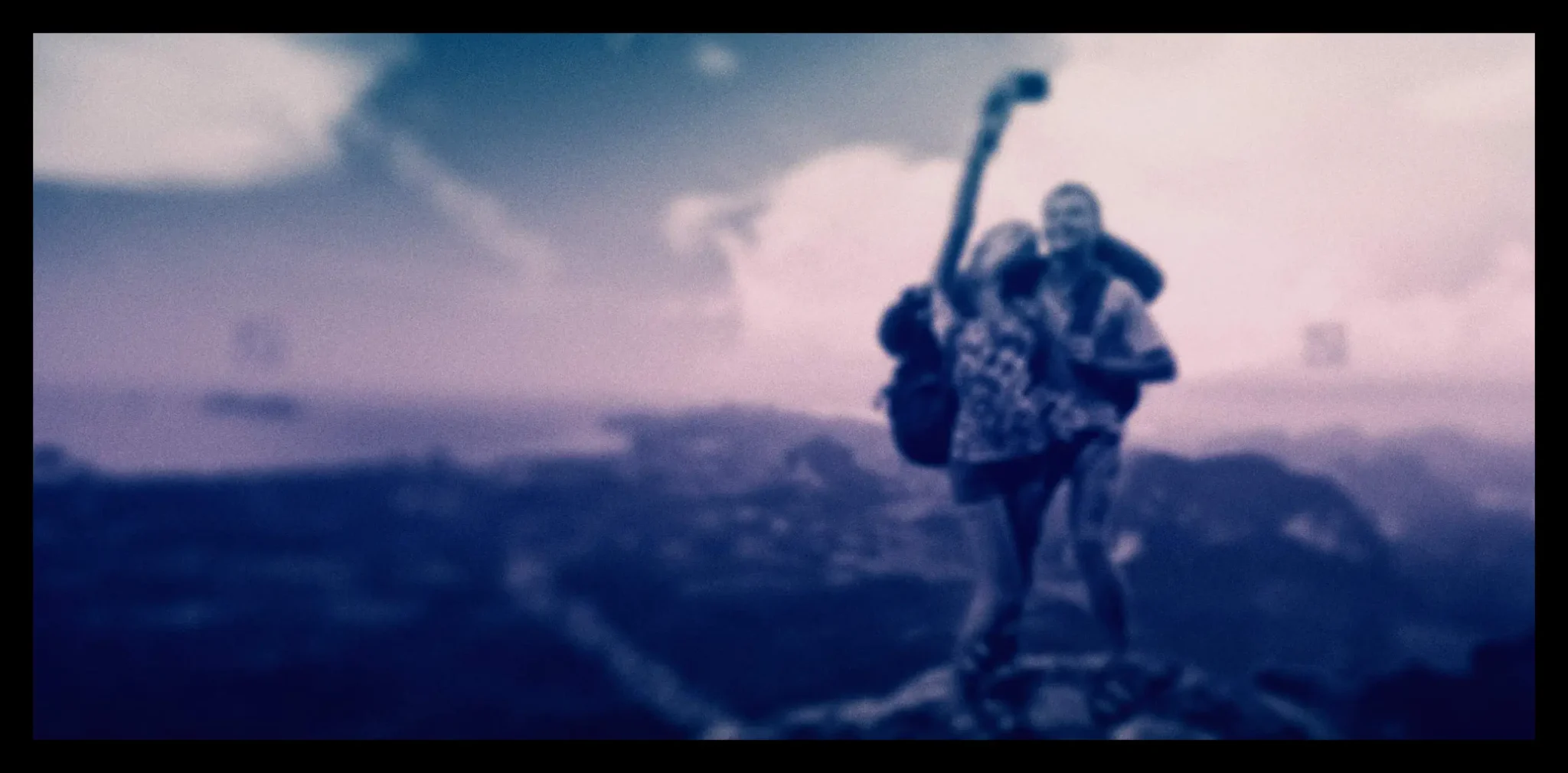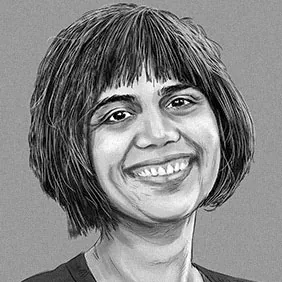Between 2014 and 2016, 76 people died clicking selfies in India — more than half the total number of such deaths reported worldwide during the same period. In 2017, at least 11 lives have been lost in selfie-related accidents in India. What explains this disturbing trend?
On a bright June evening in 2014, as the sun still shone above the high hill ranges of the north-western Himalayas, two buses were plodding down the road from Shimla to Manali, offering its passengers breathtaking —and at times unnerving— views of the landscape.
A group of 48 students from an engineering college in Hyderabad were travelling on these buses, accompanied by three faculty members and a tour guide. They were on their way to Manali to visit a hydroelectric plant as part of a 10-day industrial tour.
It had been a long and fatiguing day. A tyre on one of the buses had punctured frequently, and the drivers had accidentally locked up the students’ packed lunch in the boot. They were also upset with dropping Mathura and Amritsar from their itinerary, and cancelling a river rafting excursion.
The buses had crossed Mandi an hour ago. The narrow winding road, carved between the valley and the mountains, had now opened up a bit. In one spot, a few houses appeared on the slope of the hills, with a tiny tea stall perched by the roadside. On the other side, moss-green water shimmered as it flowed slowly between light-coloured rocks. The steep vertical incline of the grey-green mountains served as a backdrop, complementing and competing with the colour of the water.
It was beautiful and inviting.
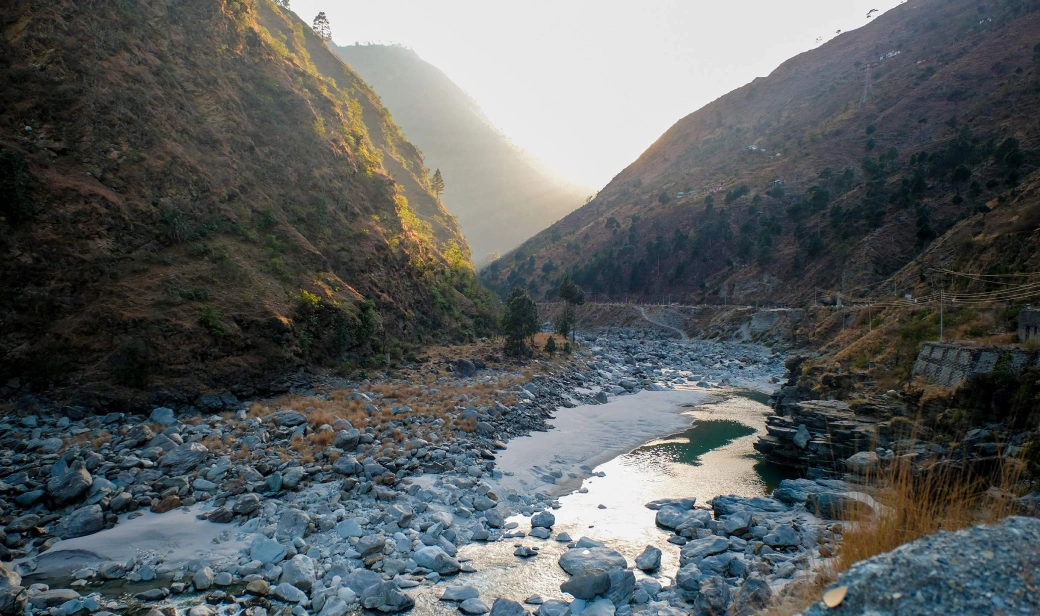
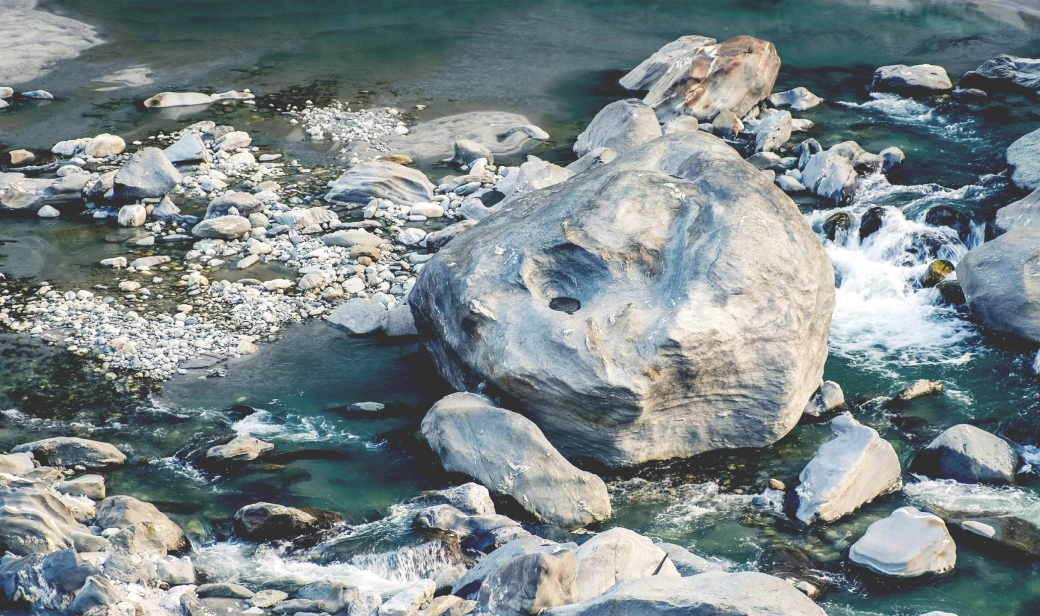
The time was 6 pm, and they had well over an hour for sunset. They got off the buses.
Many of them walked down a narrow path that led them to the river-bed. Some tourists were taking pictures; some workers were loading sand into lorries. They stepped onto two small rocks and got on top of a big boulder that stood right in the middle of the water. It was the perfect spot for taking pictures— high, big enough to fit a bunch of them, and to top it all, you could capture the the hills and the water.
They deserved this after a bad day. They took pictures of each other, some selfies and ‘groupfies’ (group selfies). After 20 minutes of posing for pictures on top of the boulder, most were ready to go back to the bus. Some were still trying to get that one perfect shot.
With a couple of his friends, Raman Teja Venigalla had waded into the middle of the shallow stream. He lay down midstream, gazing at the Himalayas, as the ripples lulled him into a state of languor.
He was posing for a photo when he noticed that within a matter of seconds, the water level had risen. A few of the locals had gathered on the road above, and many others outside a house on the hill slope. They were all animated; furiously gesturing, shouting, and whistling at the students.
But the wind muffled their words. Raman thought he heard the word “dam” but couldn’t process what it implied.
Before they knew it, the water level rose over seven feet. It all happened in a matter of seconds. The flow was fast and the force tremendous. The stream narrowed where they stood before widening again, making the current so strong that walking out or even swimming to the shore seemed impossible. They knew they were in danger.
Raman hurried to get out. He got back on top of the big rock and looked for the two small rocks leading to the shore. By now, both were submerged. The water level rose to his chest. He literally took a leap of faith to where he thought one of the small rocks was. His judgement was correct, but he slipped off the smooth rock and fell into the ice cold water. His heart skipped a beat and he felt a chill to the bone.
Big waves were hitting him with great force. “I’m going to be swept away,” he thought to himself. He did not know how to swim.
All the 48 students knew each other very well. They had attended classes together, hung out inside and outside of college. Some of them had recently been on a trip to Chennai together. Some of them were best friends.
The ones on the shore ran along the stream to try to help their friends out. The ones in the water tried to form a chain to the shore by holding each others’ hands. Seeing how strong the current was, some students stayed put on the big rock. They assumed that the water would not reach them at the top of the boulder.
But, the waves were stronger than anticipated, and they were thrown off the boulder. Even as the currents swept them away, they held onto each other tightly.
Some of Raman’s friends could swim well, and took the responsibility of saving others. Muppidi Kiran Kumar saved four of his classmates. But, eventually, he grew too tired to fight the force of water, and was unable to swim back to the shore to save his own life.
Meanwhile, Raman, cold and tired by now, tried reaching land but could not get his right foot, wedged between two rocks, out. Fortunately, this also kept him from being swept away. And then, he heard somebody shout his name. Raman looked up, and saw his friend Biswas Nandamuri stretching his right hand out to him. He grabbed it.
Raman was the last one to get out of the water; 24 of his classmates never made it.
Raman and his friends contacted the police immediately. As he recounts the incident to me two and a half years later, he remembers how they were still full of hope when the police arrived. “We were thinking if someone could grab the branch of a tree… Few of them were really good swimmers,” he says. The police came in half an hour and told him: “Kuch nahi hoga, mil jayega ek do din me. Body mil jaayega (Nothing can be done now. We will get the bodies in one or two days)”.
Twenty-four of Raman’s classmates — half the number of students on the trip — didn’t make it. They were all 19-20 years old. It took weeks before the bodies were recovered downstream. The body of one student, Sri Harsha, is yet to be found. Their tour guide, who tried saving some students, was the 25th casualty.
What the students mistook for a tranquil shallow stream was, in fact, the mighty Beas river. The sudden inflow of water was the result of the opening of sluices of the dam powering the Larji hydroelectric project. The dam was just 2 km upstream from where the tragedy occurred. The students were unaware of the existence of the dam as there were no signboards near the spot. The power project authorities discharged water from the reservoir without a warning. The June 8, 2014 incident came to be known as the Beas River Tragedy.
The High Court (HC) of Himachal Pradesh (HP) took suo motu cognizance of the incident. In January 2016, the parents of each deceased student were awarded a compensation of Rs 20 Lakh. This will be paid by the HP State Electricity Board , the engineering college, and the HP government. The HC held the “sheer carelessness” of the Electricity Board and the college authorities responsible for the incident.
None of the students had imagined that a quick, fun adventure to get a few memorable photos for Facebook and Instagram would turn so tragic.
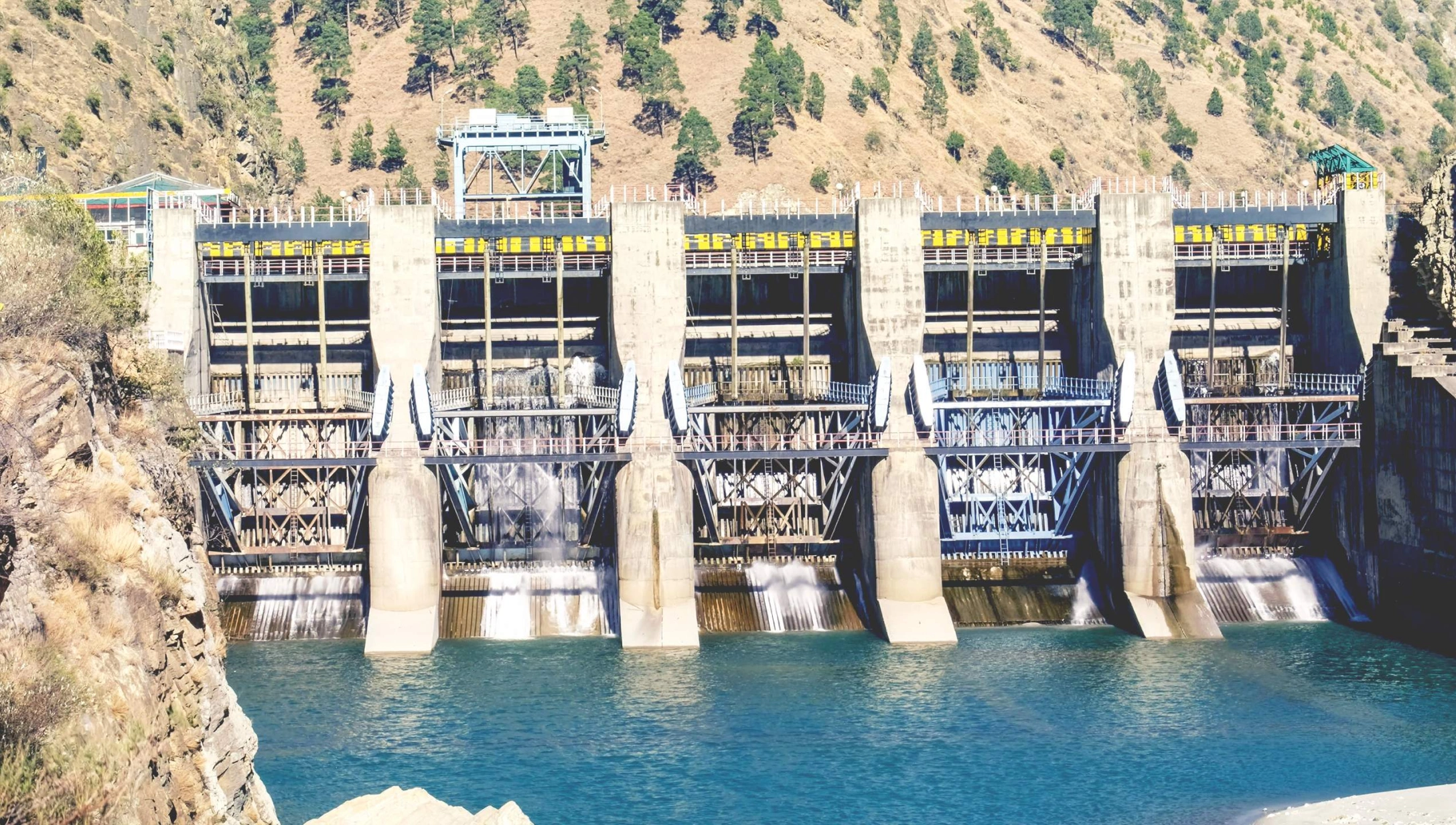
Three years later, on a very cold January morning, I visit the site of the accident with my colleague. It’s not hard to find this spot — ask anyone where the 24 students died and they will point you to a stretch of river-bank opposite the electricity board office.
The only thing that has changed since the Beas River Tragedy is the barbed wire fence and some boards put up by the HP State Electricity Board. One board reads: “Water level may rise suddenly resulting in mishap.” And it warns, in Hindi, against possible loss of lives and property.
The steep drop to the Beas river, and the rising mountains across it, have a picture post-card like beauty to it. The river is far from full, but there is still enough water for it to navigate playfully among the boulders. I spot the big rock midstream and feel shivers go up my spine.
“The only thing that has changed since the Beas River Tragedy is the barbed wire fence and some boards put up by the HP State Electricity Board.”
I can hear the sound of an excavator quarrying stone from the mountain further down the road, closer to the dam. A man is in the middle of the stream. He hops from one small boulder to the other and then wades in the shallow water. As I wonder how he got down there, I notice a narrow winding path from the flat top to the river below. In fact, there are many ways to get from the road to the river.
The people around brush aside my concerns, telling me he is a local. “We (the local people) know that this is a massive river and it is not as docile as it might seem at times. This is the Beas river, it can devour anything,” says Tanu Ram, a resident of Thalout (the village where the accident occurred), who had witnessed the mishap.
Tanu Ram says that they stop tourists from getting close to the accident spot. “Most people want to stop here for photos. We tell them that it’s not safe to stop here. When they don’t listen, we tell them about the accident.” Even the police issue fines to those who get close to the river, he adds.
While returning from the spot, I hear the siren go off. Panic grips me momentarily but I rush to see the water released by the dam. The expected deluge does not arrive; it’s still winter. For some reason, I feel reassured.
India, the selfie death capital of the world

Unfortunately, the Beas River incident is not the only such case — though certainly among the most horrific because of the sheer scope of the tragedy. It follows a pattern of a rising number of accidental deaths across India involving the pursuit of photographs or selfies, with people inadvertently putting themselves at risk.
Selfie Death Worldwide
People Killed While Taking Selfie
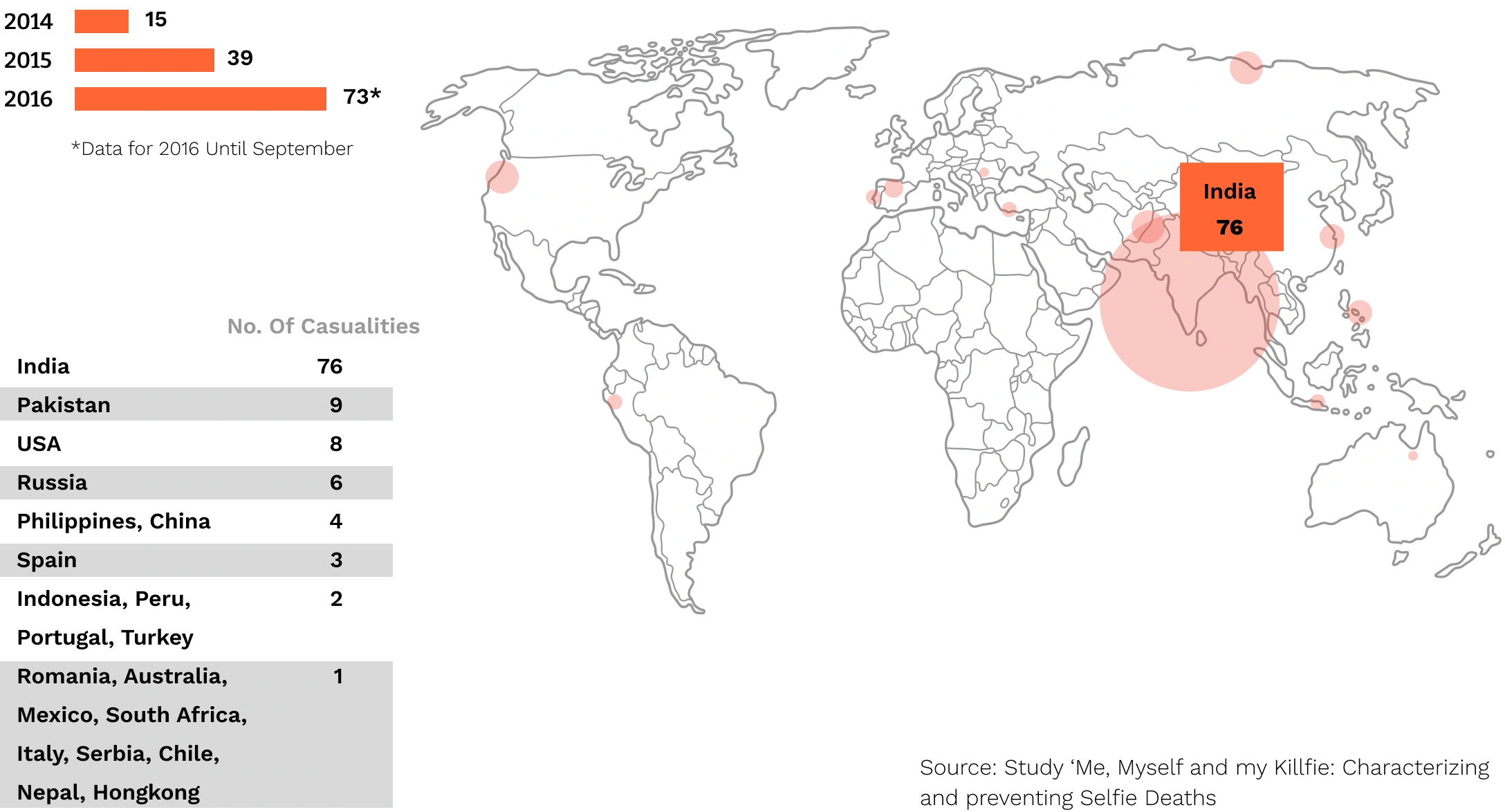


The reasons behind these deaths are complex — in some cases sheer recklessness on the part of the victim, such as taking selfies with an approaching train, is the direct cause. In other cases, a combination of improper risk assessment, poor public safety regulations, and sheer bad luck have resulted in deaths.
Smartphone front cameras, used for clicking selfies, use wide lenses which exaggerate the distance between the foreground and background.
Clicking a selfie is a self-absorbing process. The engrossing hunt for the ultimate display picture momentarily distracts the selfie taker from their surroundings.
And it’s not just emotional distraction at work here. Smartphone front cameras, used for clicking selfies, use wide lenses which exaggerate the distance between the foreground and background. So, the train or the steep cliff in your background is actually closer to you than you think while clicking a selfie.
Many selfie deaths have occurred in situations where the person has not been able to assess the potential risk he or she might be in.
NUMBER OF DEATHS DUE TO TAKING SELFIE



In January 2017, two students of class 10 left their tuition centre in Delhi in a hurry. They had rented a DSLR camera and reportedly wanted to put together a modelling portfolio. Unhappy with the photos they took outside a tourist spot, they decided to go near a railway track to get some “daring selfies.” While standing between two tracks to take a selfie with an approaching train, they failed to notice another train coming from the opposite direction. Both were crushed to death.
When a 14-year-old boy in Mumbai was gifted a smartphone for his birthday by his parents, little did they know that he would be killed six days later while posing for a selfie with a passing train.
Others have died while trying to click a selfie on the train. In April 2017, a student bound for Howrah fell from a local train after he dropped his phone while trying to click a selfie. Three of his friends who got off to help him were also hit by an oncoming train. Two of them died, while the third student was critically injured.
In another case in Mumbai, an 18-year-old girl fell into the Arabian Sea while taking selfies standing on a rock at Bandstand Promenade. An onlooker jumped in to save her. Both drowned.
In 2015, nine young men, aged between 18 and 27, were celebrating a friend’s birthday on Mangrul Lake near Nagpur. Their boat tipped over as they were standing up to pose to take selfies. Seven of them drowned. A 15-year-old in Pathankot accidentally shot himself with his father’s revolver while taking a selfie. He died after two days in a hospital.



While there is no official data on the number of people who have died taking selfies, a Wikipedia list indicates 164 deaths across the world between December 2013 and February 5, 2017.
A compilation of news reports by FactorDaily found 107 selfie-related deaths in less than three years in India.
To be sure, not all selfie-related deaths reported by the media turn out to be so, and there have been instances where victim’s families have pointed to incorrect reporting by both media and the police.
In June 2016, media reports of a ‘selfie death’ of a law student was contested by her family, who alleged false reporting by media organisations. The family claimed that she was not even carrying her phone. Similarly, in October 2016, the Times of India reported that 25-year-old Agnel Cyril Peris died while taking a selfie. But Peris’s family and friends have contested this— they’ve pointed to the fact that no selfies were retrieved from his phone.
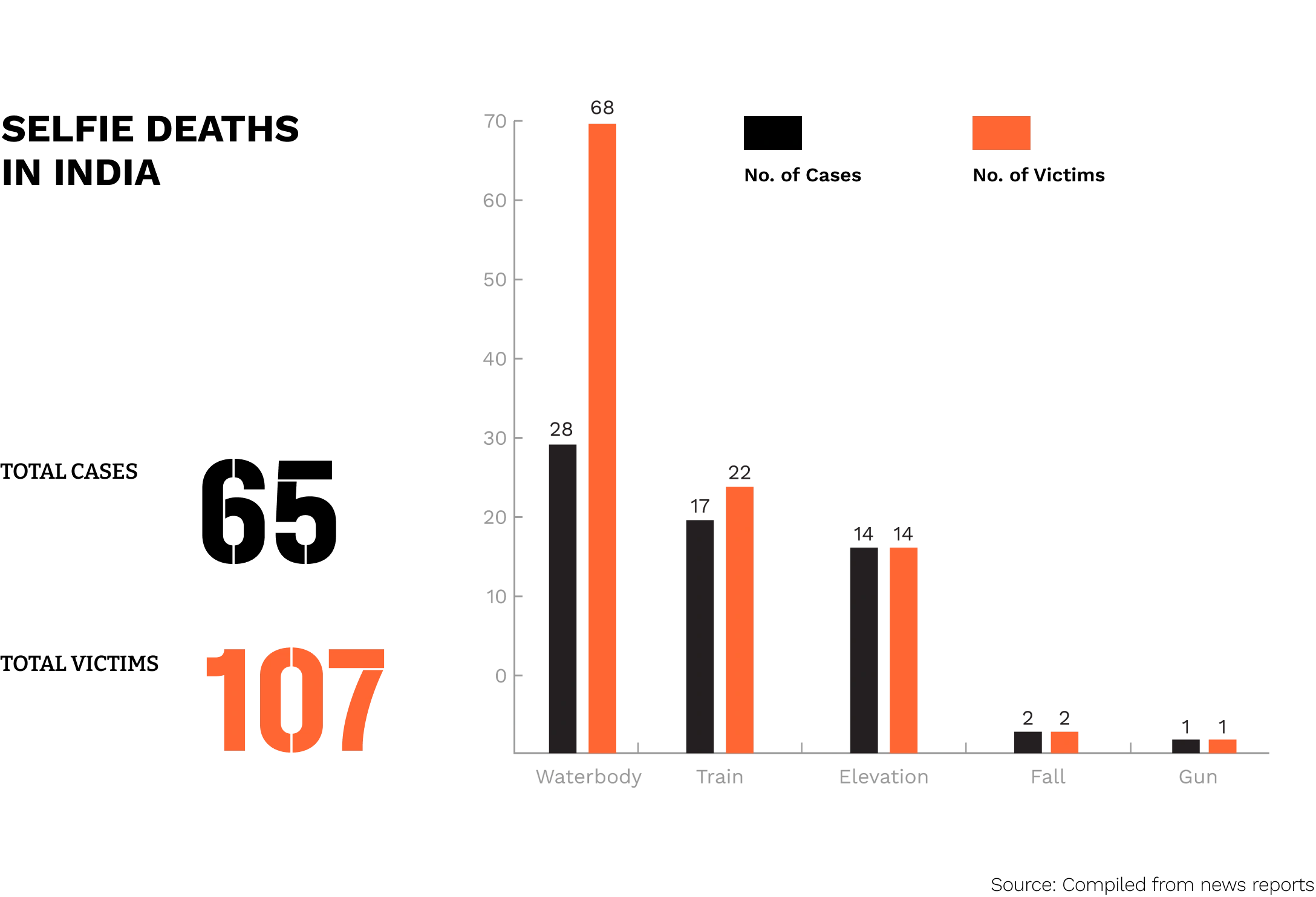
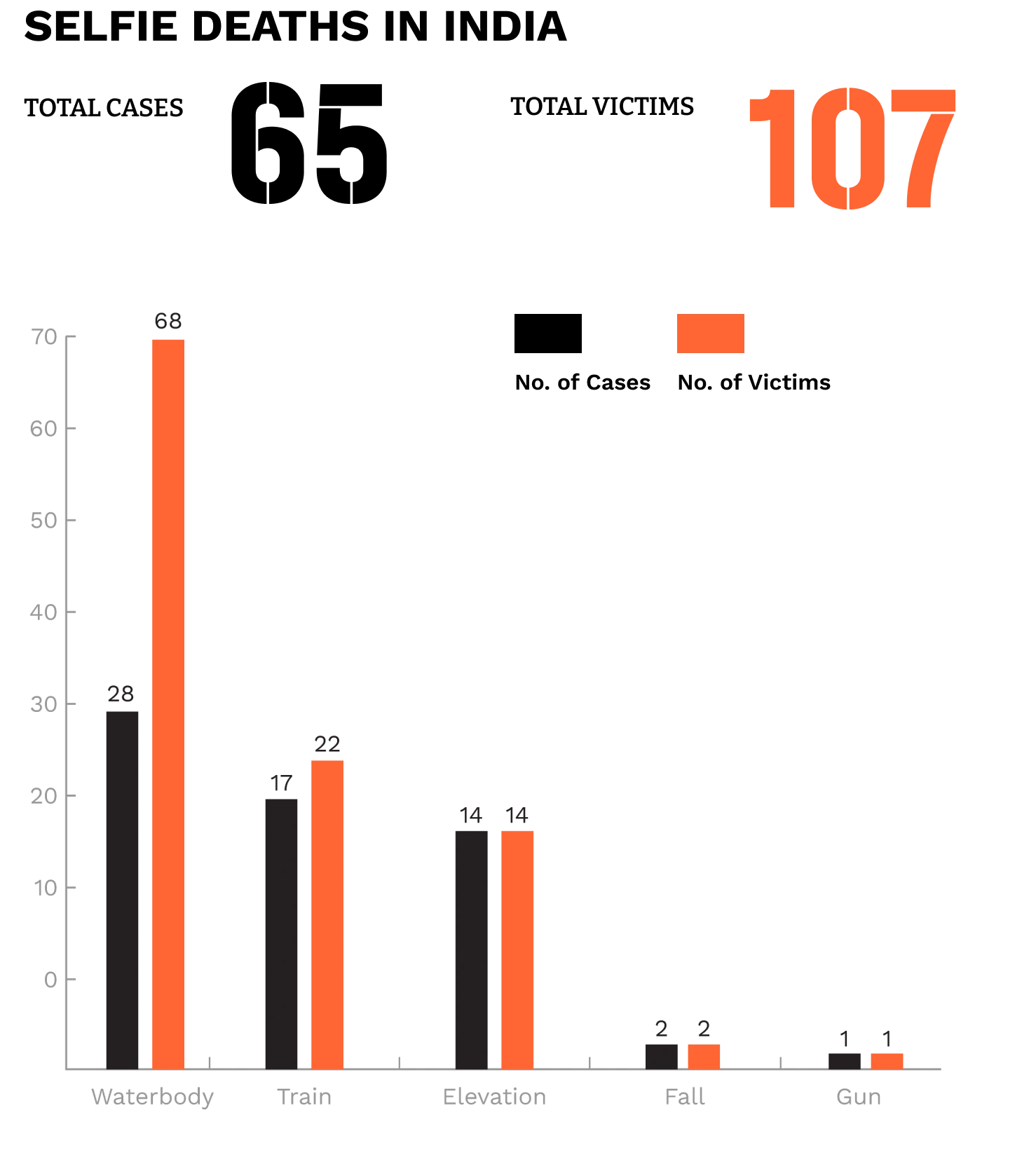

However, the fact remains that India is far and away the leader in selfie-related deaths. An academic study by the Indraprastha Institute of Information Technology, Delhi (IIIT-D) and Carnegie Mellon University (CMU) shows that India alone accounted for 60% of the reported deaths between March 2014 and September 2016. India topped the list with 76 deaths, followed by Pakistan with nine deaths, and the US with eight.
Photography and social media culture in India

‘Selfie’, the Oxford Dictionary word of the year in 2013, has become an integral part of our daily lives. Techies, cops, students, housewives all are part of the frenzy of sharing one’s life through selfies in today’s show-all, tell-all internet world. Bollywood loves selfies— be it an award function, greeting fans, or family time, a selfie is a must. Banal activities like waking up, eating and makeup, or something as serious as a surgery— everything calls for a selfie. Even our Prime Minister can’t avoid its charm.

The rise of selfie deaths can be linked to the rise in smartphone penetration and social media usage in India. In the last four years alone, smartphone penetration in India has witnessed a 12-fold growth. With affordable prices, these phones are now accessible to 300 million Indians, including teenagers.
In the same period, mobile internet usage has increased by more than seven times. With free data plans from new entrants like Reliance Jio, these numbers are expected to skyrocket.
The result of this combination is evident on social media. All small and big incidents of our lives— from gobbling panipooris off a street cart to shopping at a fancy mall, from a friend’s mehendi to a relative’s death, from an evening at a suburban resort to a mediterranean cruise — are documented on social media, complete with our photos which are often self-clicked.
Google’s AI labeled 24 billion photos on Google Photos as a selfie in 2015. In the course of any given week, “selfie” is mentioned in 365,000 Facebook posts and 150,000 tweets. And a comb of Instagram hashtags turns up more than 250 million results for the word ‘selfie’. Polls have shown that 30% of all photographs taken by 18- to 24-year-olds are selfies, and that millennials dedicate an hour every week to clicking selfies.
THE SELFIE DELUGE

Selfies In A Week On Facebook

Photos Tagged By Google AI As Selfie

Selfies In A Week On Twitter

Instagram Images Under #Selfies Hashtag

Photos Taken By 18-24 Year Olds Are Selfies

Of Selfies
Millennials Post

Average number of Selfies Millennial Will Take In Their Lifetime

Average Time Millennial Spends On Each Selfie

Average Time Millennial Spends Per Week To Take Selfies
Sources:
Frames Direct Survey of 1,000 Millennials
Pew Research.2014
Priceonomics.com
The massive improvement in front cameras (going up to 16 Megapixels in top phones) and the availability of selfie drones indicate an increasing love for selfies. There are also selfie apps in the market, most notably Beauty Plus from Chinese tech company Meitu Technology, that digitally beautify a selfie. Meitu boasts 456 million users of its selfie apps, and in December 2016, it had the biggest tech IPO on the Hong Kong Stock Exchange since Alibaba was listed in 2007. Meitu’s app was the top trending app on Google Play in India in 2016, The Economic Times reported.
Some are willing to take extreme measures for a good selfie. One selfie addict in Delhi approached an ear, nose and throat specialist to get a nose job in order to look better in selfies. She was sent to the psychiatry department by the doctor. At least six such cases of ‘selficide’ (selfie addiction) were registered at All India Institute of Medical Sciences (AIIMS) and Sir Ganga Ram Hospital in Delhi in a couple of months, India Today reported in January.
Selfies have also become an integral part of promoting your career.
On September 18, 2015, over 1800 children had queued up in the courtyard of a private school in Hyderabad. They were on a mission, to help Bhanu Prakash Racha, a 24-year-old man from their city, create a world record in clicking the highest number of selfies in an hour.
Bhanu had taken up the job of a research assistant at a city hospital after a degree in pharmacy. On his way back from work one day, he overheard his fellow passengers talk about Dwayne ‘The Rock’ Johnson’s Guinness World Record of clicking 105 selfies in three minutes.
“I am a huge fan of Dwayne Johnson. I decided I would make a selfie world record too. And, that way, I could meet the legend, at least in the virtual world. Soon, I quit my job to practice for the record,” Bhanu told me when I met him in Hyderabad in January this year.
He decided to attempt the world record for most selfies taken in an hour. NFL’s Patrick Peterson currently holds the [Guinness World Record](http://www.guinnessworldrecords.com/world-records/most-self-portrait-photographs-(selfies)-taken-in-1-hour) with 1,449 selfies taken in an hour; the record was set in January 2015.
Bhanu set out to click 1,800 selfies in an hour.
The task turned out to be tougher than it seemed. The Guinness rules require each selfie to be taken with a different person. So, 1,800 selfies required 1,800 people. Bhanu chose a school where children were enthusiastic enough to participate in his attempt. He also trained for a month to hold his elbows and neck in the position that Guinness requires for the record to be recognised. This involved working with a trainer to exercise his hands and wrists.
Though he fell short of setting a Guinness World Record, his feat of clicking 1,265 selfies in an hour was recognised by World Records India.
Bhanu had tried his luck as an actor in Telugu film industry. He had even appeared in a TV commercial with Shah Rukh Khan. “But, nothing made me famous like my selfies did,” he says. This is why he chose @iammrselfie as his Instagram handle.
DIGITAL POPULATION OF INDIA

Active Mobile Internet
Users in India

Active Internet
Users in India

Internet Penetration
in India

Projected Mobile Phone Internet User Penetration In india for 2021
SOCIAL MEDIA USAGE IN INDIA
Source: Stastista.com
Selfie deaths: Who, how, and why?

How are people dying while taking selfies?
This was one of the questions that intrigued the researchers from CMU and IIIT-Delhi in their paper on selfie-related casualties. Titled “Me, Myself and My Killfie: Characterizing and Preventing Selfie Deaths”, the study found that most people are dying worldwide due to two primary reasons: height and water. The third most significant reason, and one that is unique to India, is death by trains.
“In India, the biggest reasons for selfie-deaths are waterbodies, trains and elevation, and it is mostly people between 14 and 25 years of age who are dying,” says Dr Ponnurangam Kumaraguru, an associate Professor at IIIT-D, who was part of the team.
The researchers also looked at the profile of the typical selfie death victim. “The data shows that (even though) females take more selfies, male deaths are more common. More than 75% of the victims of selfie deaths are men,” says Dr Kumaragaru.
Why does India dominate the selfie death list, recording over 60% of selfie deaths? Population could be one reason, but then China, with a population of 1.35 billion, has only one reported selfie death. Dr Kumaraguru believes India can’t possibly be the country clicking the most number of selfies, so the high number of deaths needs another explanation.
The growth of the Indian smartphone market has accelerated recently, with the country becoming the second largest smartphone market in the world in 2016.
SMARTPHONE PENETRATION IN INDIA
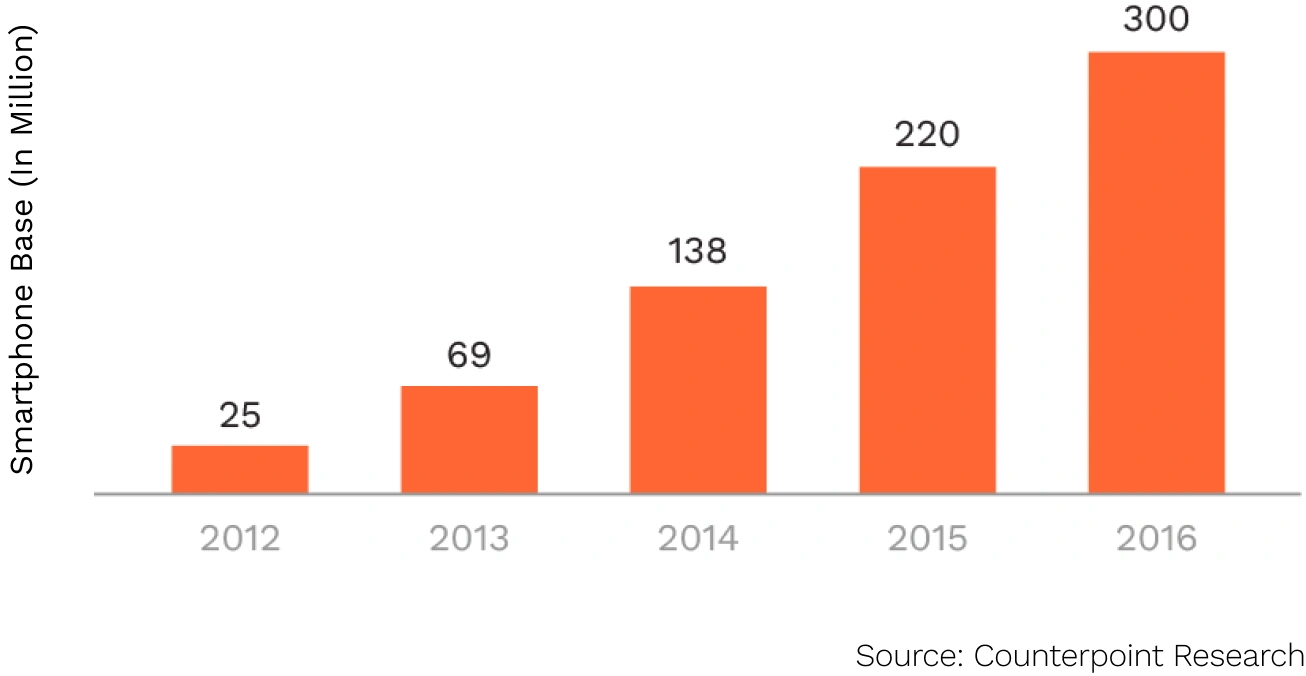

Another reason could be the general lack of safety measures and guidelines in public places — around waterbodies, railway tracks, cliffs, tall buildings. The data released by National Crime Records Bureau (NCRB) in 2014 showed that 80 people drown every day in India, or more than 29,000 every year. Between 2009-10 and 2014-15, there were a total of 803 accidents in Indian Railways killing 620 people. Considering the safety risks in public places, a distracted or incautious selfie-clicker might be at a higher risk in India.
Another reason could be the general lack of safety measures and guidelines in public places — around waterbodies, railway tracks, cliffs, tall buildings
Dr Kumaruguru hypothesises that it could also be a combination of the newness of technology, newness of access to information, and newness of social media penetration. “I have this technology to take a picture. And, my networks are big when I post it on social media. Through this, I derive some social currency,” he says.
Culture, argues Dr Kumaruguru, can also play a role in these deaths. “Maybe there is something culturally; some instances do look very culturally driven. Maybe it’s some habits that we Indians have.”
For instance, he points at the phenomenon of train deaths that occur only in India.
“Train incidents are very intriguing— it’s a very Indian thing. The young men and women taking selfies with trains seem to be saying that if we have the entire train on our selfie, our friendship is everlasting. We are not sure what relationship they are establishing between friendship and trains. We need more psychologists, anthropologists, sociologists to study this,” he adds. He thinks that there are some parallels between gun deaths that happen only in the US and Russia, and train deaths in India.
Another reason for the large number of casualties could be that Indians prefer to take group selfies. “I would want to know if people in other countries take so many group selfies, and that too, in spots where they could die. I’m not sure they do,” he says.
Preventing dangerous selfies

Since the rise in selfie deaths, government officials across the country have stepped up efforts for prevention. In the Nashik Kumbh of 2015, the local administration enforced “No Selfie Zones” in select areas on certain days, which witnessed the arrival of over 22 lakh pilgrims. The ban was enforced based on the result of a “human behaviour study” conducted by more than 100 volunteers over a month and a half. The study showed that people climb dangerous spots to take selfies, and also that people stopping to take selfies in a crowded place could cause stampedes.
In 2016, the union tourism ministry issued an advisory to all states asking them to identify tourist spots that are prone to accidents, installing signages warning visitors of the danger involved in taking selfies, and barricading areas wherever possible danger is identified.
The Gujarat forest department had to issue an advisory against taking selfies with lions. A month after two deaths near Bandra bandstand in January 2016, Mumbai Police declared 16 ‘No Selfie Zones’. Recently, Karnataka also declared 400 spots across the state as ‘no-selfie’ zones.

The IIITD-CMU study also looked at early warning systems to prevent selfie deaths. One insight that Dr Kumaraguru and his team learnt while studying trending hashtags like #deathbyselfie and #dangerousselfie is that dangerous selfie-takers are not necessarily selfie death victims.
Their inference was that people who are dying while taking selfies are not necessarily at risk because of the environment.
“There are social media accounts and individuals in Russia who take dangerous selfies and gain a lot of attention and social reputation. Some are doing it for fun, while others are doing this very professionally,” he says. In many of these instances, the selfie takers climb high-rise buildings with specialised equipment just to take selfies.
“But, these people are not the ones dying,” the researcher points out.
So, their inference was that people who are dying while taking selfies are not necessarily at risk because of the environment. However, instead of approaching the activity in a planned way, like the Russian pros who have all the necessary equipment to deal with risks, they are more lax in situations that are not very risky to begin with, but become risky because of a failure to follow basic safety protocols. “While taking the selfie, they’re lost or absorbed, unaware of the lurking danger,” he says.
Using AI, Dr Kumaraguru and his team are attempting to tell whether a given selfie is dangerous or not. They use a combination of text, image and location based features to classify a selfie as dangerous or not. Now, the team is working on building a mobile application to make selfie-taking safe.
“A lot of risk analysis— if a bear or an elephant is behind you, if there is a water body close by, or if you are at an unsafe elevation— can be done on your phone as phones have become so powerful today,” he says.
His team has a couple of intervention ideas. One of them is that if a spot is dangerous, the app will shut your phone. The second one is when you pick your phone for selfie, it will analyse where you are and give you signals saying whether it’s okay or not to take a selfie. Another idea is when you are in a place where people have died taking selfies, the app will send you notifications that you are in a danger zone.
Though Dr Kumaraguru is not aware of any other project with the potential of making photography safer in public places, there is one person who has been working on assessing risks and creating awareness about accident-prone areas. It is Raman Teja Venigalla, the 20-year-old who survived the Beas River Tragedy.

Photo: Sriram V Murthy.

Photo: Sriram V Murthy.
On a January afternoon this year, Raman Teja Venigalla is sitting in his house in Hyderabad. It’s been two and half year since the Beas river tragedy.
Behind him is a sketch of Shirdi Sai Baba that his father made. He pulls out an envelope from behind the framed sketch and shows me a collage of photographs of the 24 students who died. There is another collage of the entire group on the trip, with “the 24” in the centre of the frame. There are photos from the trip and from their time together in college. He points at people and tells me their names, the kind of bond he shared with them, and who saved whom that day.
“When I got out, 24 from our group were still in the water. We thought we would find them downstream. I was telling myself that some of my classmates would be stuck between rocks like I was; some would be holding onto a tree or something; some would be saved by locals. It took us several days to realise that we had lost them forever,” he says.
“Only later did we find out that it was the Beas river and the spot we were at was close to Larji dam,” he says.
“If only we knew all this, things would have been different today,” he adds.
He does not break down while talking about it. He speaks about the friends he lost with a sense of pride — many of them drowned trying to save others. A deep sense of loss is hard to miss in his voice, though.
And the sense of loss, along with regret for the lack of information, has encouraged Raman to start a project after the accident. Within six months of the trip, he registered a technology startup, while still in the second year of his instrumentation engineering course. The company’s first project was to build a mobile phone application that helps you assess risks of accidents in public places. The app is called Project 24, in memory of his 24 friends.
“When you are travelling in an unfamiliar area, the app will tell you about the existence of a waterbody or dam close by, an unmanned railway crossing, a deep gorge or an accident prone road etc. It would also have information about any accidents that have happened in your vicinity. The idea is to ensure we are aware of the potential risks,” Raman says.
For this, Raman and his team is gathering data from various agencies— National Highways Authority of India, Crime Records Bureau, Indian Railways, etc. In the first stage, they have chosen roads from Hyderabad to some major cities like Bangalore, Mumbai, Chennai and Vijaywada. He is hoping to bring out the prototype soon. He is also looking to launch the website and invite donations for this not-for-profit project in a couple of months.
“The idea (of Project 24) is to ensure we are aware of the potential risks,” Raman says.
“There is no point in crying over what happened. I cannot bring my friends back; all I can do is try to make sure something like this never happens again. It’s a huge task and Project 24 is just the first step. This is my tribute to my friends,” he says.
Raman has not been on a long trip since the Himachal journey. “I don’t feel like it. Plus my mother is afraid of the idea of me travelling anywhere far,” he says.
However, he has learned how to swim.
— With inputs from Shamsheer Yousaf
— Infographics: Angela Anthony
— Photos: Sriram V Murthy




